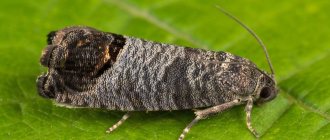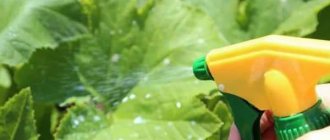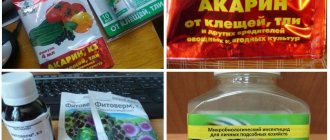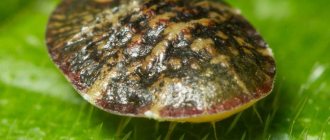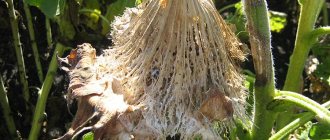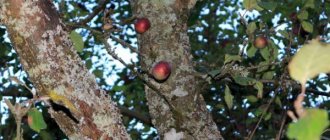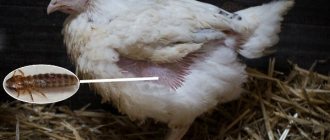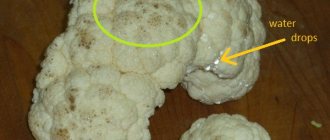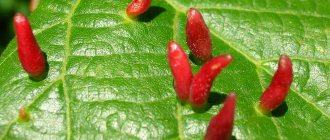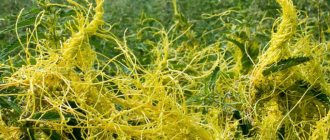Some summer residents are confident that only chemicals can destroy pests, while others firmly adhere to traditional methods that have not yet lost their effectiveness. Who is right, and how to fight the Colorado potato beetle?
If the Colorado potato beetle appears in the garden, the fight against it can continue for decades. This pest easily adapts to unfavorable conditions and annually develops immunity to the most intricate poisons. In such a situation, only the effect of surprise will help: alternating different methods and means, using them in combination.
Therefore, despite the presence of numerous chemicals, the use of traditional methods is completely justified. And many summer residents successfully use them on their plots.
The greatest effect is obtained by treating potatoes before planting, then there will be no news from the Colorado potato beetle and wireworm for a long time. But if you did not have time to protect the plants, and insects have already appeared, immediately begin active action.
We propose to consider budgetary folk remedies for combating the Colorado potato beetle and evaluate their advantages.
Manual collection of the Colorado potato beetle
In a small area and if you have enough time, it is quite possible to get by with manual collection of insects. Surely, you tried this method, but then decided that it was too long and pointless: the beetles and larvae quickly appeared again. But how correctly did you perform the procedure? Here are a few simple secrets that will speed up the collection of beetles and allow you to clear your plantings for at least a few days:
- use a bucket filled with soap or strong saline solution to collect so that the beetles do not fly away;
- do not crush beetles and larvae between potato rows, they can survive and continue to reproduce;
- on warm days, insects are especially active on the tops of bushes, but do not forget to inspect the lower parts of the plants;
- remove any found masonry from the leaves.
Some summer residents pour kerosene into a bucket, but if it is inhaled for a long time, signs of poisoning may appear. Therefore, it is better to give preference to soap or salt.
Description
The Colorado potato beetle is an insect with an oval, convex, shiny yellow-orange body 8-12 mm long, up to 7 mm wide with five black stripes on each elytra. The beetle has black spots on the dorsum, the membranous wings are well developed - the beetles are able to make long flights.
The Colorado potato beetle larva, 15-16 cm long, has a black head and two rows of black spots on the sides. At first, the body color of the larvae is dark brown, but over time it becomes bright yellow or pinkish - when eating leaves, the larvae are able to digest all pigments except carotene, which, accumulating in the tissues, colors the bodies of the larvae in a carrot color.
Colorado potato beetles overwinter in the soil at a depth of 20 to 50 cm, and in the spring they come to the surface, feed on seedlings, mate and lay eggs on the underside of leaf blades. One female can lay from 5 to 80 eggs per day, and from 300 to 1000 eggs per season. The larvae of the first instar feed on the pulp of the leaves from the underside, the larvae of the second instar destroy the entire blade, leaving only the midribs, and the larvae of the third and fourth instar spread, often moving to other plants.
- Kidney mite: control and prevention measures
After 2-3 weeks, they burrow into the soil to a depth of 10 cm and pupate, and after 10-20 days they turn into an adult and come to the surface or, if late autumn has already arrived, enter diapause until spring.
The lifespan of Colorado potato beetles is one year, but some individuals can live two or even three years. If the beetles are in danger, they do not fly away, but fall to the ground, pretending to be dead.
Potato traps for the Colorado potato beetle
An inexpensive and effective way to catch insects is to set up potato traps, which lure the beetles and save you the time of manual collection.
For the trap, prepare a liter jar and put several tubers cut into pieces in it. Then dig the container between the rows of potatoes so that its top is at ground level, grease the edges with potato juice. The beetles will crawl to the smell, fall into the trap and will not be able to get out of it. All you have to do is collect the containers and destroy the beetles. One trap jar is enough for 5 square meters of planting.
An easier way: lay out several cut tubers or potato peelings in small piles and wait for the insects to crawl to the bait. Choose a place close to potato plantings.
It is especially useful to place potato traps in the fall to prevent the Colorado potato beetle from going to winter. To do this, use tops. Cut it 2 weeks before harvest and place it separately. When the beetles crawl towards the pile, collect and destroy them.
Features of pests and reasons for their appearance
The fight should begin by getting to know the enemy. Knowing the life cycle, vital functions and weak points of the insect, you can clear it from your summer cottage much faster and more efficiently.
The Colorado potato beetle gets its name from its origin. For the first time, a striped and so insatiable insect was recorded in the USA, Colorado, where it destroyed huge potato plantings. Then, with plants and fruits of vegetable crops, it spread far beyond the continent.
The pest belongs to the family of leaf beetles, has small sizes (up to 12 mm in length) and a characteristic bright color of the back with longitudinal alternating stripes of black and pale orange.
Insects have wings, thanks to which they quickly move over fairly long distances, “conquering” new areas of land.
Beetle larvae pose a particular danger because they are voracious and can destroy most of the crop in a short time.
The life cycle of Colorado potato beetles is quite simple:
- The fertilized female lays small, yellow or bright orange eggs on the underside of the leaves - 25-80 eggs per clutch (from 500 to 1000 pieces per season).
- The larvae hatch in about 5 days. They look like short, thick worms. The body is brown, salmon-pink or crimson with rows of black dots, the head is black. Over the next 15-22 days, the larvae feed and grow, undergoing periodic molts. Then they dive into the ground and experience the pupation stage, which lasts 20 days. The time spent in the larval and pupal stages is highly dependent on air and soil characteristics (temperature and humidity).
- The formed beetle crawls out or remains underground until spring.
When manually collecting beetles from plants, adults, caterpillars of different ages, and eggs are immediately removed from plants (usually the leaves on which clutches are found are simply torn off)
Insects feed on the soft part of the leaves, eating everything except the veins. They especially like potato tops, but they are also not averse to eating the foliage of tomatoes, eggplants, bell peppers and other crops belonging to the nightshade family.
Damage to green seedlings leads to almost one hundred percent loss of yield, so control should begin as early as possible. In this case, insects should be destroyed at all stages of development - eggs, larvae, adults.
Colorado beetles that have settled in a summer cottage can destroy not only the potato crop, but also threaten eggplants, tomatoes and other nightshades.
The Colorado potato beetle is especially dangerous for young plants. It quickly destroys their delicate foliage completely. Having noticed a parasite on plantings that are in the initial stages of the growing season, you need to take the most active measures to destroy it. Experienced gardeners try not to slacken efforts of this kind throughout the entire gardening season in order to prevent the proliferation of pests and prevent them from overwintering in the soil. This allows you to at least partially protect the crops that will be planted next year.
Mustard for the Colorado potato beetle
Mustard will help repel harmful insects from potato plantings. In other words, this is an excellent and budget repellent that can be used in different ways, mixed with other components or independently. Tender larvae, which cause the greatest harm to plantings, especially do not like mustard.
Most often, the product is used to prepare solutions that are sprayed on potato tops. The following recipes are effective:
- dilute 100 g of dry mustard in 10 liters of water and add 100 ml of 9% vinegar;
- dilute 100 g of dry mustard in 1 liter of water and add a little laundry soap.
Potatoes are treated with folk remedies at least once a week.
You can also plant mustard between the rows of potato plantings, and when it blooms, mow it and spread it under the bushes. This will repel not only the Colorado potato beetle, but also the wireworm.
Fighting methods
There are several ways to combat the Colorado potato beetle on potatoes: chemical, agrotechnical, biological and folk methods.
Chemical
When using chemicals, extreme caution must be exercised; it is not recommended to use preparations for the Colorado potato beetle without instructions.
The manual must contain detailed information about the rules of use, precautions, and must clearly describe actions to take in the event of potential poisoning.
Treatment should be carried out in the morning or evening, as hot weather can cause the spread of harmful fumes.
Currently, there are a large number of insecticide preparations, the most common are Regent, Mospilan, Bankol, Aktara, Sonet, etc.
The dosage must strictly correspond to that specified in the manual; exceeding it will not increase efficiency, but will contribute to the accumulation of hazardous substances in the soil and plant tubers.
When using chemicals, it is necessary to take into account the high adaptation of beetles to them, so they must be changed periodically.
Agrotechnical
This approach requires adherence to the following recommendations:
- crop rotation rules must be strictly observed;
- plots should be located as far as possible from pumpkin or nightshade crops;
- in the fall, the beds must be dug deeply;
- early ripening potato varieties need to be planted earlier;
- when the seedlings become crowded, the lower leaves should be buried higher;
- Regular loosening of the soil between rows has a beneficial effect, which will reduce the number of pupated insects;
- weeds must be destroyed;
- after harvesting, all residues from the soil and ground must be removed;
- mulching with straw or pine needles.
Biological
Biological methods are absolutely safe, they do not entail adverse consequences for the environment, and the resulting harvest is not hazardous to health.
Such drugs include Bitoxibacillin, Bicol, Fitoverm, Agravertin.
Bitoxibacillin is applied by spraying with repeated treatment after a week.
The effect of the drug is that it promotes the development of bacterial spores in the beetle’s body, as a result of which it becomes inactive, lethargic, and loses the ability to reproduce and feed.
Fitoverm is characterized by its rapid action; the drug penetrates the body of insects and their larvae through the intestines or integument, causing immobility and then death.
After 8-10 hours the feeding process stops, after 3-6 days the beetles die.
If the effectiveness of the drug ceases for the period when larvae appear, the treatment is repeated.
Traditional methods
The main advantage of traditional methods is their absolute safety for the environment and human health:
- 100 g of tar must be diluted in 10 liters. water, the resulting solution is used to spray the area;
- wood ash is boiled for 10-15 minutes, infused for a day, filtered to 10 liters. 50 g of soap is added to the liquid, used to process potato tops;
- infusions and decoctions can be prepared from garlic, burdock, wormwood, celandine, and dandelion.
Spraying is carried out in the early morning or evening, treatment is carried out weekly and stops 20 days before harvest.
Cornmeal, which increases in size in the stomachs of the insect, which leads to its death, is also considered an effective means of pest control.
Onions and garlic from the Colorado potato beetle
If you don’t know how to treat potatoes against the Colorado potato beetle, pay attention to onions and garlic. To prepare the products, both whole plants and husks are used.
For example, a solution prepared according to this recipe has proven effective: take 200 g of onion peels and crushed heads of garlic, add 10 liters of water and boil over low heat for 2 hours. You can also add 200 g of shag. Then strain the broth and add water to 10 liters. To make the product stick better to the leaves, add 30 g of laundry soap.
If you have time, prepare onion infusion . To do this, fill a three-liter jar one-third full with onion peels, fill it to the brim with warm water and place it in a dark place for 2 days. Then strain, dilute with water (1:2) and add 10 g of liquid soap. The spray product is ready!
To quickly deal with pests, try this method: pour 500 g of husk with a bucket of boiling water and let it brew for 2 days. Then add soap and start processing. No need to dilute with water.
Onion and garlic spraying should be carried out in the early stages of plant development, when there are not many insects yet.
- 7 ways to use garlic in the garden
Tips on how to use regular garlic to get rid of plant pests, increase yields and solve other garden problems.
How to get rid of it without chemicals
A manual collection method that allows you to get rid of Colorado potato beetles without chemicals is described above. Another way to fight safely is to use traps. You can plant a few young potato plants that will attract all the insects and can be hand picked. Another good trap is placing potato peelings over the beds. Insects run over to them, and they can be destroyed en masse.
Use of natural enemies of the Colorado potato beetle
While some summer residents use chemicals to treat potatoes from the Colorado potato beetle, others are looking for a universal and safe way to get rid of the pest. The natural enemies of beetles and larvae - birds, predatory mammals and insects - come to the aid of gardeners.
Ladybugs, frogs, lizards, starlings, crows and even moles are not averse to feasting on striped pests. Of course, you shouldn’t involve every single one of your helpers, but a few birdhouses in your dacha won’t be superfluous.
The perillus bug is a natural enemy of the Colorado potato beetle.
In America, the Colorado potato beetle and its larvae are eaten by the predatory bug Perillus , which has not yet been able to adapt to living in all climatic regions of Russia. It is most often found in the Krasnodar region.
Can poultry eat the Colorado potato beetle? Yes, but for this, chickens, geese and guinea fowl need to be accustomed to a similar menu from childhood, gradually mixing insects into their usual food.
Unfortunately, releasing such helpers into plantings is quite risky, because, in addition to beetles, they will quickly eat the harvest of other crops.
Resistant varieties
Potatoes that would not be interesting to the Colorado potato beetle do not exist in nature, but breeders have managed to develop several varieties with dense, coarse foliage and a sharp, repellent odor. Due to this, the insect does not like them very much. If the beetle has a choice, it will make it in favor of other, more attractive varieties. That is why many potato growers prefer to grow potatoes such as Lasunok, Temp, Zarevo, Kamensky, Nikulinsky or Utro Previously. These hybrids are highly resistant to the pest. Even a massive invasion of striped fish into fields and vegetable gardens has virtually no effect on their productivity.
The Colorado potato beetle is very tenacious and is capable of quickly restoring the population, so the fight against it must be comprehensive and constant. Plant protection should be done not only when it appears in the garden. It is carried out throughout the entire season, starting with the processing of planting tubers and ending with deep autumn plowing of the site, after which a significant part of the insects die.
Celandine - a miracle cure for the Colorado potato beetle
The medically known celandine will rid potatoes of the striped pest for at least 2 weeks. Its poisonous juice destroys larvae and beetles, and also repels new insects that want to settle in your summer cottage. The plant is used in two ways: as mulch and as a decoction.
In the first case, place freshly cut plants under each potato bush. When the plants dry out, replace them with fresh ones, avoiding overheating. To prepare the solution, place dry or fresh celandine stems in a bucket to the very top, compact and fill with water. Then boil for 15 minutes, cool and strain. To treat, dilute 500 ml of the mixture in a bucket of water and spray the potato tops.
A little time after treatment with the celandine solution, you will find that the beetles have died
Treatment of potatoes against the Colorado potato beetle and wireworm with celandine can be carried out before planting. Soak the tubers in a strong solution, and for the first time they will receive reliable protection. To prepare the preparation, fill a bucket with fresh celandine, compact it, fill it with water and boil it. Infuse the resulting mixture for 24 hours, do not dilute it with water.
Celandine is poisonous, so when working with it, use rubber gloves, as well as closed clothing and shoes.
Traps
In the spring, after planting potatoes, a week before emergence, it is necessary to cut the old tubers into halves or slices and soak them in a chlorophos solution for 24 hours.
It is recommended to scatter the bait in the evening so that they do not dry out in the sun. The beetles eat the poisoned potatoes and die. It is recommended to repeat the procedure in the fall after harvesting.
To make traps, cans can be used; vegetable juice is used as bait, which is rubbed on the edges of the jar; parts of the tuber are also placed inside it.
Attracted by the smell of the plant, the beetles collect in the jar, after which they are very easy to remove from there. To achieve high efficiency, the procedure must be repeated daily.
White clover will clear the plantings of pests
Fighting the Colorado potato beetle with folk remedies enriches summer residents with new agrotechnical knowledge, because to destroy the enemy you need to know everything about its characteristics. So, these insects do not like it when the soil is enriched with nitrogen. And plants of the legume family, in particular white clover, actively absorb nitrogen from the air and transfer it to the root system. Thus, the soil in the planting areas becomes unsuitable for the Colorado potato beetle to live in.
Plant perennial white clover near the beds, in rows or on the lawn, and pests will not get close to the potatoes. This method also helps to repel the larvae of the May beetle (Khrushchev).
Colorado potato beetle larvae also do not like the smell of cruciferous crops (cabbage, rapeseed, etc.).
Preventing beetles
When dealing with pests, it is important to understand that it is unlikely that you will be able to get rid of them forever. There are a number of reasons for this:
- high insect fertility;
- suitable climatic conditions;
- the ability of pests to withstand hunger for up to 2 months;
- wintering deep in the ground, which provides protection from freezing;
- the ability to cover long distances in flight.
It is impossible to get rid of pests forever due to their high survivability, active reproduction and ability to quickly adapt to climatic conditions and many insecticides
In order not to fight the pest again and again, we recommend taking measures to prevent its occurrence. First of all, use wood ash to fertilize the soil when planting potatoes.
Do not destroy spiders, lacewings, ladybugs - these insects are the worst enemies of the Colorado potato beetle.
fragrant flowers around the perimeter of the garden or beds - mattiola, calendula, marigolds, night violets. Such plants will not only decorate your summer cottage, but will also help ward off striped pests.
The activity of the Colorado potato beetle is not always the same. The “population” of the parasite varies from season to season depending on the weather. Thus, in warm and humid summers, the possible number of reproduction cycles increases, and in snowy and moderately cold winters, the maximum number of adult individuals overwintering in the soil survives. Experienced gardeners claim that the apparent success of using “homemade” remedies, as a rule, coincides with years characterized by a natural decrease in the number of pests. This means that for now, manual collection remains the safest and most effective way to combat this scourge. In terms of effectiveness, it can only be rivaled by the use of fairly aggressive pesticides, which many summer residents try to avoid. We can only hope that a harmless, convenient, affordable and radical remedy for the beetle will appear in the near future.
You can get rid of beetles on potatoes using folk remedies or pesticides. Choose a control method that will not only be effective, but also as safe as possible for root crops and people.
Wormwood poison from the Colorado potato beetle
Various infusions are prepared from bitter wormwood, which help fight beetle larvae at their earliest stage of development. There are several proven recipes. You can try it yourself by preparing, for example, this infusion. Take 1 cup each of wormwood leaves and wood ash, pour into a bucket, add hot water, mix thoroughly and let sit for several hours. Then drain the liquid and add 1 tbsp. laundry soap. Spray the plantings with the prepared mixture in calm and dry weather.
If you have ash left after gardening work, prepare the following mixture: grind 250 g of fresh wormwood leaves, add 1 cup of ash and add hot water. After 2-3 hours the product will infuse. Mix it thoroughly and strain. The treatment will be especially effective during the period when larvae appear on the bushes.
For already grown insects, a stronger infusion is needed. To prepare it, use the following ingredients:
- 400 g wormwood;
- 10 pods of hot red pepper;
- 100 g garlic leaves;
- 100 g celandine.
Pour 10 liters of boiling water over the prepared components, let it brew for half a day and you can begin processing.
When preparing any herbal preparations, observe safety precautions, because, despite the naturalness of the ingredients, allergic reactions are possible.
Chemicals
Chemical agents against the Colorado potato beetle differ in their mode of action. They are systemic and contact. The manufacturer indicates the active ingredient and its recommendations for use on the packaging. It is very important to consider that chemical preparations for the Colorado potato beetle act not only on the pest, but also on plants, soil and humans. Therefore, those who use any chemical preparations must take precautions and not exceed the recommended dosage. Good results are obtained by using such means as:
| Name of the drug | Release form | Terms of use | Number of treatments |
| "Bitoxibacillin" | Tablet | In 10 liters of clean water, it is enough to dissolve from 40 to 100 g of the drug. Spray the plants at an ambient temperature of at least 18°C. | During the season, 2-3 treatments with a frequency of 10 days. |
| "Fitoverm" | In liquid form (ampoules and vials) | Dissolve the ampoule (1 ml) in one liter of water, then increase the volume of water to 10 liters. | Repeated treatment at the time of hatching of larvae from eggs. |
| "Aktara" | Granular, liquid, powder, tablet. | Dissolve 1 packet or 1 ampoule in 1 liter of water. Bring the volume of the solution to 5 liters. | Root watering is repeated after 2 months. Spraying - every other month. |
| "Confidor" | Emulsion and powder | The solution is prepared according to the manufacturer’s recommendations depending on the concentration of the substance. | 1-2 treatments per season at monthly intervals |
Basic rules for chemical treatments:
- The product is only diluted on the street. Be sure to protect your eyes, hands and face from getting the composition.
- Potatoes are sprayed with the solution in dry, windless weather. Do not use drugs during rain or immediately after it. This reduces the effectiveness of the procedure.
- Potatoes should not be eaten after processing for the time specified by the manufacturer.
- The product is chosen no higher than toxicity class 3. This is especially important if there are pets on the property that eat the Colorado potato beetle.
In addition to the negative impact on plants and soil, chemicals require repeated use. Also, the striped leaf beetle quickly adapts to substances and stops actively reacting. There are natural enemies of the beetle that are of great help to potato growers.
